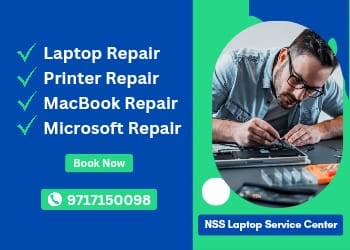
You must be wondering what OEM is and how it can help you produce your final product after hearing about OEM items from so many individuals.
"OEM" is frequently used in the IT and automotive industries. Since the definition of OEM has changed over the years, any business that produces parts that another company can employ to construct its finished product or the whole system is considered an OEM.
This comprehensive tutorial will assist you in comprehending what OEM means. Learn more about OEM and pertinent phrases, advantages, and other information in this blog.
After reading the material, you will understand how and why OEM items are more affordable for businesses.
OEM Terminology
The acronym OEM stands for an original equipment manufacturer. It alludes to the business that markets its products to other companies.
These businesses use them as crucial elements in producing their finished goods, which they then market to customers.
OEM is frequently defined as a business that buys products and rebrands them as new goods. After that, they sell them to other companies to be used as components.
Additionally, OEM offers considerable time and financial savings. The producers can concentrate on their core company operations thanks to their ready-to-use components.
Each tertiary component can be developed quickly by the buyers.
Why is OEM crucial?
Businesses do not have to invest time and resources into producing OEM equipment internally. They merely include OEM components in their goods.
OEM goods are less expensive as a result of economies of scale. Additionally, they may offer a strong return on investment.
Additionally, OEM parts lengthen the product's lifespan at the cooperating plant. With replacement parts, it is possible to preserve optimum performance while cutting costs. The financial performance of the factory can also be improved in this way.
OEMs also incorporate new technology to aid in developing robust business support systems.
Because of these, picking an OEM is frequently done to cut costs for the maker or reseller. Additionally, this is why OEM equipment is so crucial.
What connection do OEM and VAR have?
The relationship between OEM and VAR can be illustrated with a straightforward example. Electronic component manufacturers offer their goods to HDTV manufacturers like Samsung and Sony, who assemble the components as part of the HDTV manufacturing process.
As the name suggests, a VAR (value-added reseller) performs the reseller role. VAR will package your goods with some extra value.
Therefore, VAR will combine your program with other complementary items rather than offering it as a separate product. He will then sell it to the final customers. OEM has always concentrated mainly on business-to-business sales. However, VAR is utilized to promote to end users.
Also Read: How To Connect Mobile To Laptop
Also Read: Difference Between ROM And RAM
The Distinctions between ODM and OEM
The original Design Manufacturer is referred to as ODM. ODMs manufacture equipment. However, they rely on product specifications or designs created by other businesses.
OEM, in contrast, has its own set of specs and designs. The OEM Company's logo is displayed on manufacturing equipment.
ODMs also adhere to the design requirements set forth by the business contracted with the ODM for manufacture.
The produced component has the outsourcing company's branding rather than the ODM's brand name. ODM is beneficial for reducing production costs associated with outsourcing.
OEM and Aftermarket Differences
OEM is the antithesis of aftermarket. The OEM product is created specifically for the end-original user's product. The component known as the "aftermarket" was created by a different firm and used by the consumer as a replacement.
For instance, a person could need to replace the XYZ Thermostat Ford Taurus-specific car thermostat. He can get an OEM part that is a replica of the XYZ thermostat that was used in the original vehicle.
Or he can purchase an aftermarket that is an alternative made by another company. In simple terms, if the replacement comes from XYZ Thermostat, it is an OEM product; otherwise, it is an aftermarket product.
How does OEM apply to a brand company?
Let's shed some light on the OEM meaning's unique concern. Some VAR businesses, including Dell and IBM, have started utilizing branded components from other sources.
As a result, OEM gained a reputation over time as a business that rebrands manufacturer's items for resale.
For instance, Dell has discontinued utilizing chips from an unidentified manufacturer. It has shifted to Intel, which is a brand in and of itself and increases the value of Dell PCs.
What makes OEM products Cheaper?
1. OEM manufacturers solely create product parts.
After defining OEM, it's critical to understand why their products are less expensive. OEM firms use straightforward production processes to create only a portion of the final product.
Their designers, producers, and testers concentrate on fewer comparable items. They are not required to pay for integrating numerous technical parts into a single system.
Many brand corporations collaborate with other parties to produce large quantities because of economies of scale. Time and cost are significantly decreased as a result.
Verifying what you buy from OEMs is crucial, though. The OEM components you purchase ought to be reasonably priced and offer performance and functionality.
2. There is no cost for the packages.
The packages are free of charge.
OEM hardware and software are removed from manufacturing facilities for distribution to businesses like Apple and Dell that construct their systems. These businesses purchase bulk from OEM items like graphic cards and semiconductors inaccessible to the average user. Because of this, OEM products are not packaged for retail sales but in a generic box or simple wrapper. According to OEM industry terminology, their items are least visible on any major.
These reasons stop the OEMs from spending money on packaging. This reduces overall cost, and you get components cheaper.
3. There are no other distribution channels between you and OEM
Distribution through media is a common factor in increasing product prices. Distribution channels between users and sellers commonly lead to more costs because intermediaries also profit from the products.
As per OEM definition, they produce components that no longer go through the distribution channels. They can be sold directly from the factory to you. The specific needs and demands are met through these components.
Also Read: HP World Navi Mumbai, Maharashtra
Also Read: LENOVO SERVICE CENTER IN NAVI MUMBAI
Conclusion :
I won't say much, as the blog has informed you about OEM products, the difference between OEM & ODM, and why they are cheaper.
Frequently Asked Questions
Popular Services
- MacBook Battery Replacement Cost
- HP Printer Repair in Delhi NCR
- Dell Laptop Repair
- HP Laptop Repair
- Samsung Laptop Repair
- Lenovo Laptop Repair
- MacBook Repair
- Acer Laptop Repair
- Sony Vaio Laptop Repair
- Microsoft Surface Repair
- Asus Laptop Repair
- MSI Laptop Repair
- Fujitsu Laptop Repair
- Toshiba Laptop Repair
- HP Printer Repair Pune
- Microsoft Surface Battery Replacement
- Microsoft Surface Screen Replacement




